Design Workshop: Plywood as Finish
Plywood has earned its place in the pantheon of versatile and indispensable building materials at the architect’s disposal. Strong, lightweight, relatively inexpensive, and easy to work with and install, it’s the industry standard for structural sheathing and subflooring. As a structural material it’s very often buried and concealed in the finished building — until recently.
Architects and designers in search of novel uses for humble materials are now using plywood for a higher aesthetic purpose as a finished surface in living spaces. It’s become a handy means of modernizing and warming an interior for a relatively inexpensive cost. Although I appreciate the raw aesthetic of plywood and can relate to the desire to have the warmth of wood on a limited budget, it’s not right for every surface of a home. Here’s how to know if it’s right for you.
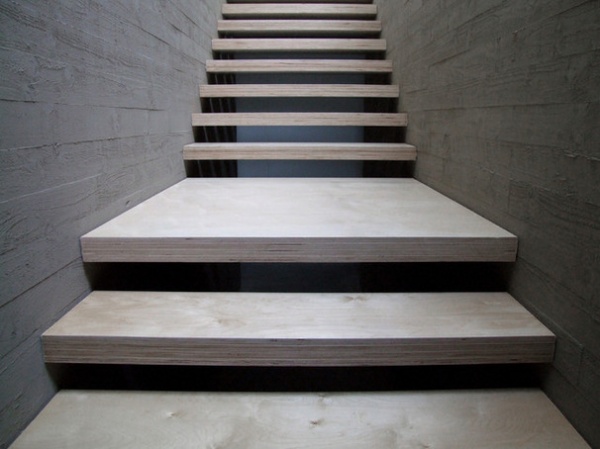
To use plywood wisely, it helps to understand a little about its origins and makeup.
What is plywood? Plywood is essentially stacked layers of thin plies (sheets), commonly called cross-bands, of wood. Each successive ply is rotated, which lends the panel strength. The rotation determines the ultimate strength; 90-degree rotations between plies are found in less expensive plywoods, while 30-degree rotations are found in higher-quality plywoods. Each ply is glued to the successive one with heat and pressure to form the sheet.
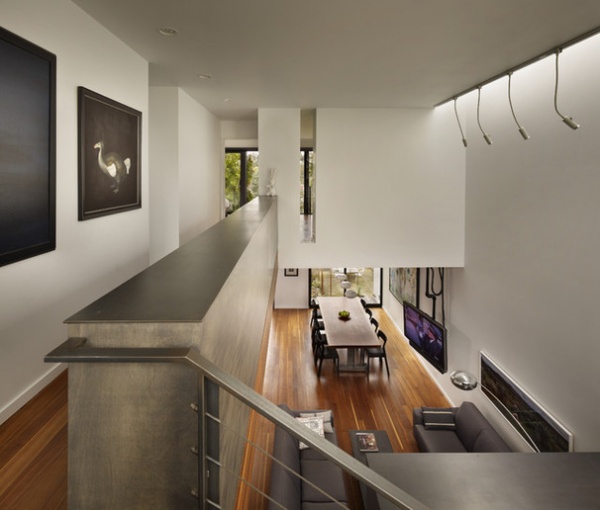
Sheet thickness is determined by the total number of plies that comprise the sheet; the typical range is ¼ inch to 1 inch and up. The thickness, wood species, type of glue used and grade of the outward-facing plies determine the grade of plywood and ultimately its cost.
The Power of Plywood All Around the House
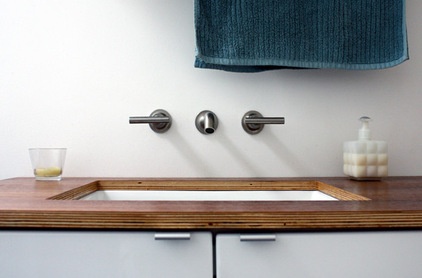
As an example, a sheet of ¾-inch CDX plywood you might find in a big-box store is ¾ inch thick with one C-grade face and one D-grade face, and the adhesive (waterproof glue) bonding the plies together is rated for exterior (X) use. The grading of the faces ranges from A (the highest quality) to D (the lowest quality). The American Plywood Association (APA) has an excellent visual resource that explains the grades in detail.
How to work with wood in the bath
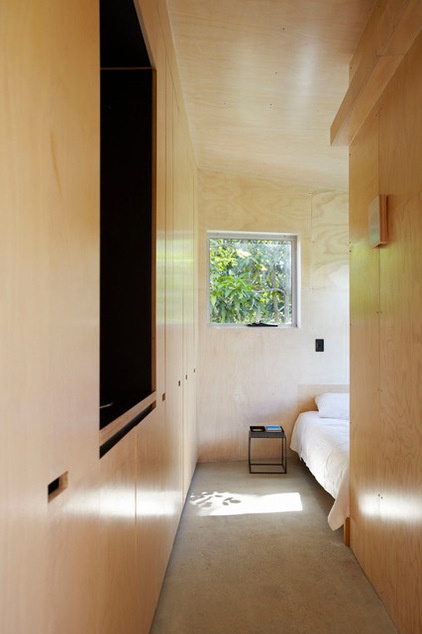
The finished face veneer of plywood can be made of almost any wood — hard or soft. Some commonly used veneers are:
BirchOakMapleCherryMahoganyAshBeechTeakThe cleaner the aesthetic and the fewer the knots, the more expensive the panel. The cost of hardwood veneered plywood begins at around $40 and goes up from there to $150 and up per 4-foot by 8-foot sheet, depending on the thickness, species and veneer specifications (book matched, slip matched etc.). Construction-grade plywoods are about $30 to $40 per 4-foot by 8-foot sheet.
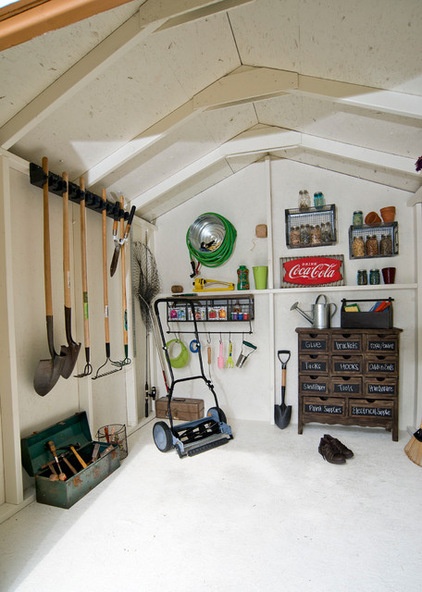
Where to Use Plywood
Lower-grade plywood left exposed is a natural fit for utilitarian structures, because it can withstand abuse. Plywood also makes for easy fastening of shelving and hooks, and accepts paints well. Potentially good spaces are:WorkshopsShedsGaragesBasements
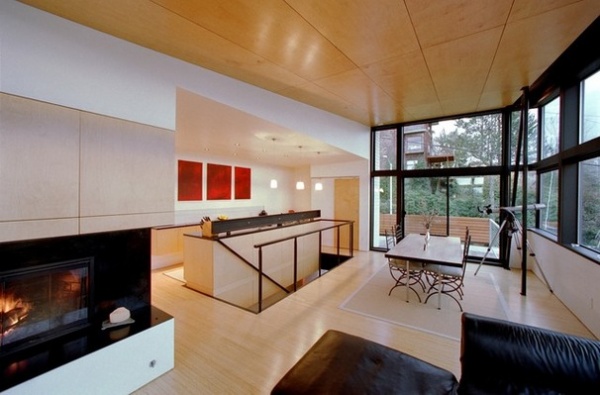
Living spaces, however, demand higher face grades with fewer imperfections, as seen here. The question of where to use plywood also extends to the physical location within a space: floors, walls and ceilings.
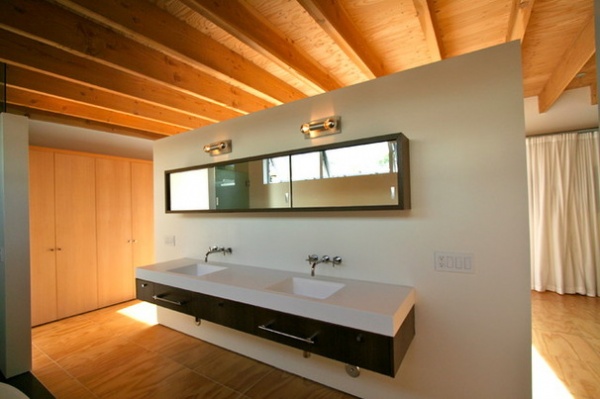
Ceilings. Using exposed plywood as a ceiling finish is an honest expression of its function as the subfloor (or roof) support above. The ceiling application has the most versatility in terms of finishing requirements. It can be left unfinished, stained or sealed with clear coatings. Spaces like bathrooms should be sealed to prevent mold growth and make cleaning easier.
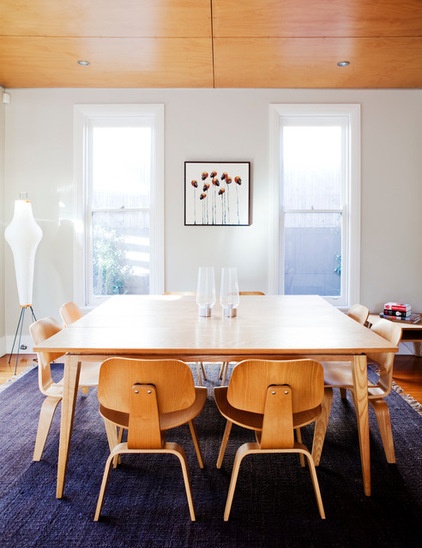
This project has plywood as the finished ceiling surface below the ceiling framing. In this instance, the panel joints influence how refined the space feels. The architect and contractor have centered the joints between the windows and the lights in each panel. These are details that require a little extra foresight but go a long way to making the interior feel crafted and intentional.
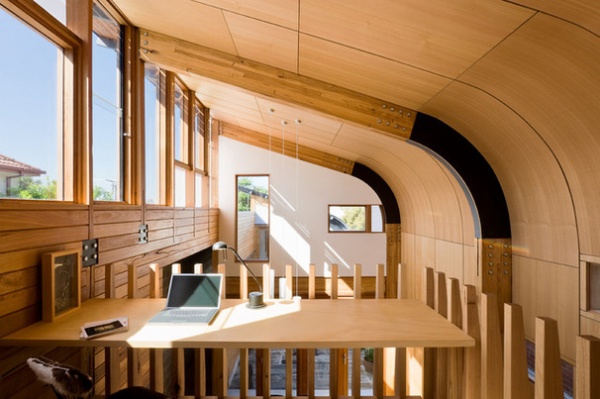
Plywood is an excellent choice for finishing curved surfaces.
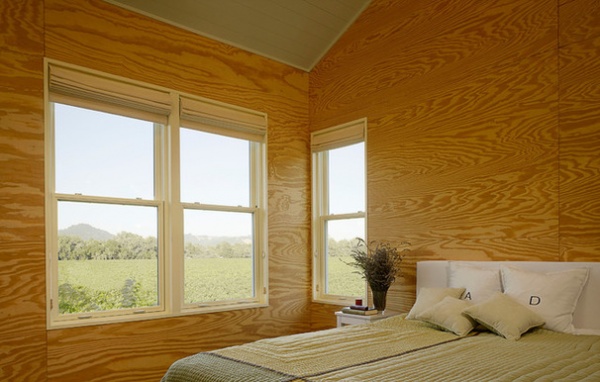
Walls. The higher cost of veneered plywood as compared with other common wall finishes — drywall, for example — is offset by lower installation and finishing costs (no mudding, sanding or painting). In the form of large sheets on a wall, plywood is an excellent choice. Because we brush up against them often, walls are best sealed with a smooth finish — a satin polyurethane or tung oil is a good choice. Oil-based finishes will tend to yellow with age, while water-based finishes will remain whiter.
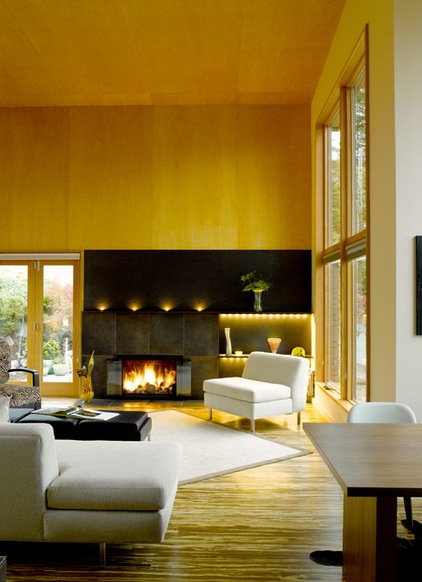
Depending on the veneer cut, grade and installation, interior plywood walls can appear refined.
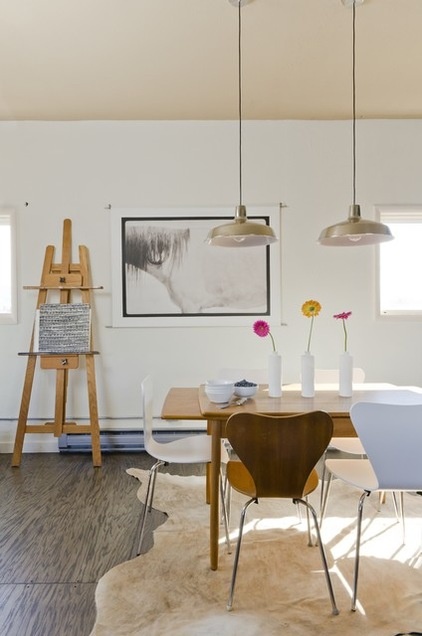
Floors. Because the plies that make up the finished face of plywood are usually very thin (⅛ inch, give or take), floors aren’t nearly as forgiving as other locations. Thin face veneers mean the wear surface isn’t thick enough to be mechanically sanded and refinished as the floor shows wear. For high-traffic areas and homes with pets, I recommend avoiding plywood as a floor finish altogether. For areas that see limited or light traffic, plywood can work if you select a hardwood veneer for improved wear resistance.
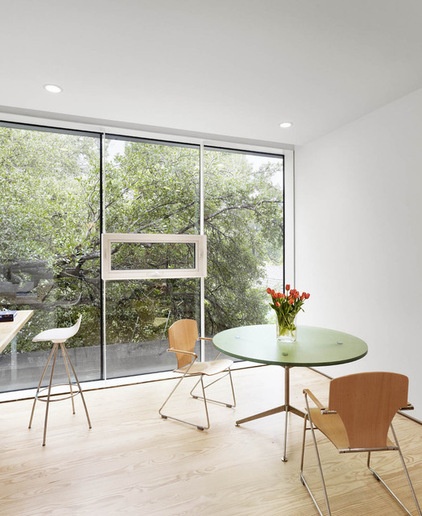
You’ll also want to opt for a hard finish, like an oil-based polyurethane. The finish will act as a sacrificial wear layer. The benefit of plywood as a floor material is that as sheets wear out, they can be replaced.
The number of seams on a floor will depend on how large the sheets are. Fewer seams are obviously better on a floor, but they will still become part of the overall look of the space and are something to think about from a design perspective.
See how to install a plywood floor
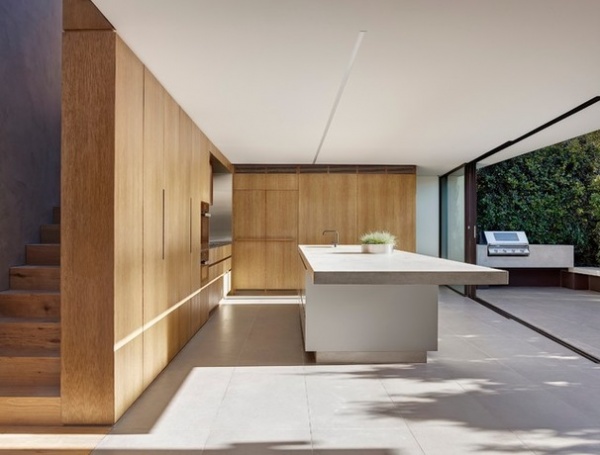
Cabinetry. When we think of a house as being composed of a variety of elements, we can start to see other applications for plywood too. There’s a long history of plywood use in cabinetry construction. Here’s it’s used as a thick wall element and defines a distinct private zone in the floor plan. Treating an entire interior wall as if it were a finished piece of cabinetry has added warmth and an unpretentious refinement to this home. Used in this way, the plywood has a timeless quality to it that transcends trendiness.
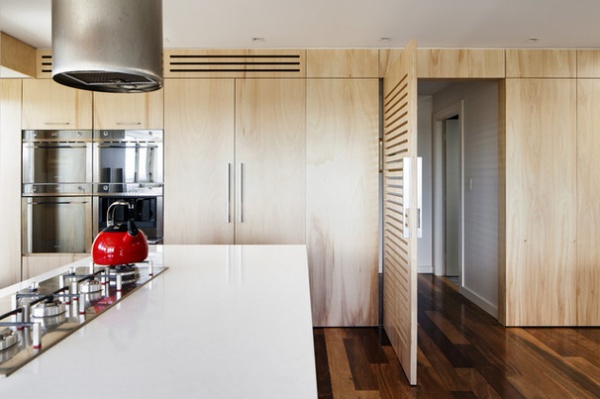
This integrated wall of cabinetry incorporates a passage door and warms up the neutral color palette.
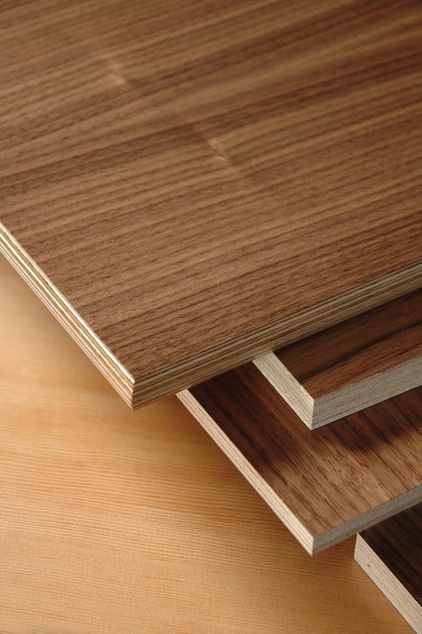
Interior Health
The ingredients that make up everyday building materials have, rightfully, come under increased scrutiny of late. When we adapt common exterior building materials for use inside, we have to be especially vigilant. Products with high levels of toxins off-gassing into our living spaces should be avoided whenever possible. Luckily there are formaldehyde-free products — such as PureBond, shown here — that can help minimize the overall toxin load in the home.
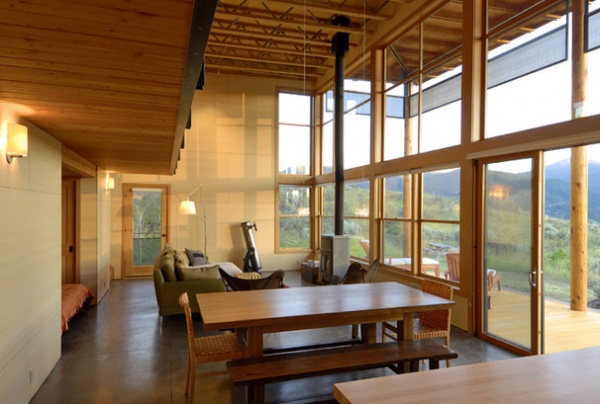
Panel Layout, Joints and Fastening
The means of joining plywood panels figures prominently into the overall aesthetic of a room. The number of seams, as I mentioned earlier, depends on the size of the sheets. The fewer the seams, the lower the labor cost to install the panels.
Fewer seams are better on a floor, while ceilings and walls have more design flexibility. Open joints are the least costly, but care must be taken to minimize sharp edges.
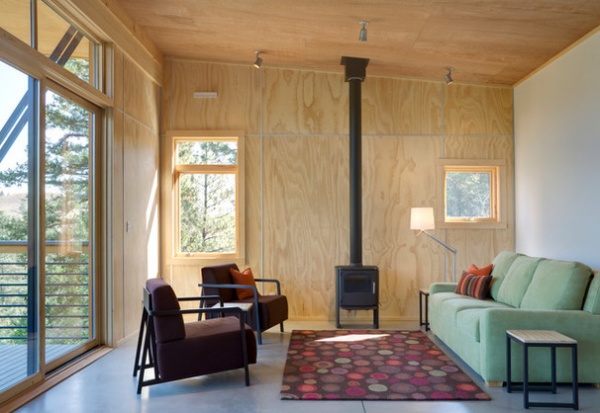
T-shaped metal trim pieces like the ones used in this project are another means of covering the joints. Joints and fasteners that are concealed lend a monochromatic, planar look to a space and don’t call attention to themselves.
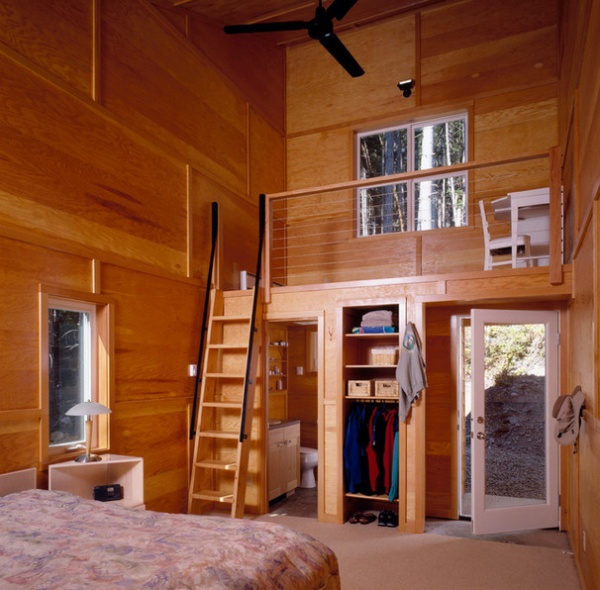
Another option is to use battens, as shown here. When laying out the panels, especially with battens, pay special attention to the intersections of important elements in the room — floor levels and ceiling planes, as well as doors and windows.
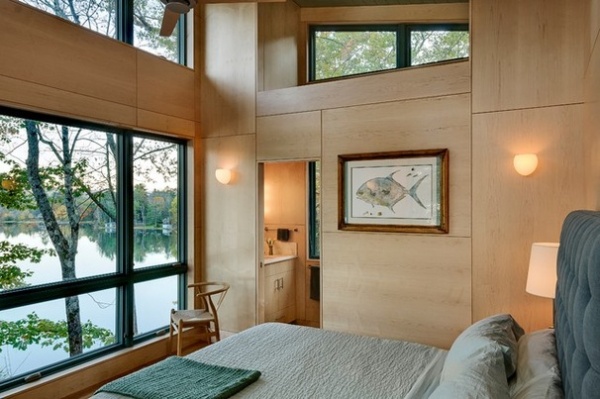
Revealed joints express an idea about fitted pieces in a complex puzzle.
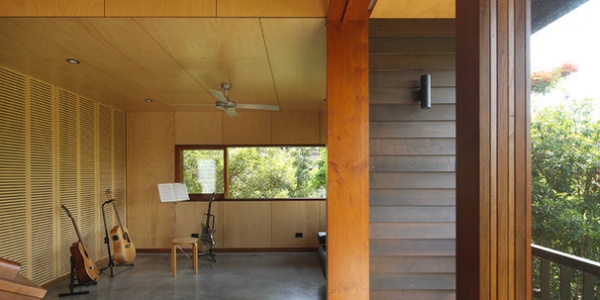
Attaching the panels is a factor of the joint detailing too. Exposed fasteners preserve the ability to remove or replace panels in the future. They also allow for access to plumbing or other hidden infrastructure elements. The fastener selection can be pronounced with button-head, metal or rubber washers, or it can be subtler and in the background with trim-head screws. Informal spacing would drive the architect in me insane, but your threshold and need for order may vary.
Hidden fasteners and tongue and groove joints are the most refined and cabinet-like choice but require more effort to install.
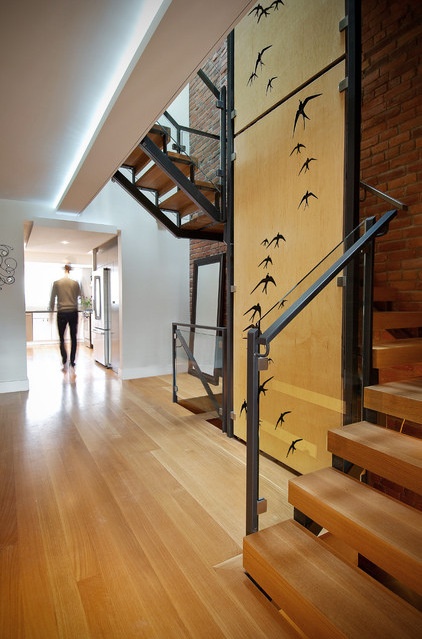
Accents
Small, targeted uses of plywood can be successful too. This laser-cut panel artfully marries the function of a guardrail with a multistory sculptural plane that subtly suggests upward movement in the stairway.
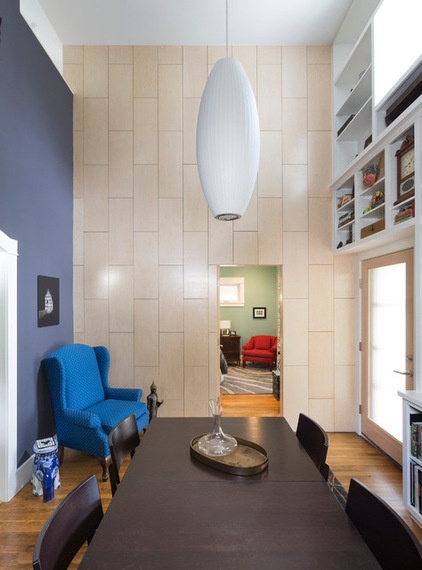
Here plywood has been sawn into rectangular strips and laid in a ½-inch running bond pattern, emphasizing the vertical volume of the space. When plywood is used in thoughtful, targeted locations, it can have a meaningful impact, one that feels rooted in an idea rather than fashion.
More: A Few Words on the Power of Simplicity












